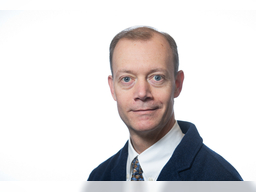Colloquium: Dr. W. Gustafson|Pacific Northwest National Lab.
In-Person PHYS 401
Location
Physics : 401
Date & Time
May 3, 2023, 3:30 pm – 4:30 pm
Description
TITLE: The LASSO Large-Eddy Simulation (LES) Activity for Understanding Clouds and the Boundary Layer: Enabling Research through LES Ensembles for the Community
ABSTRACT: The U.S. Department of Energy’s (DOE) Atmospheric Radiation and Measurement (ARM) user facility has been collecting data for 30 years with the aim of improving our understanding and ability to model clouds, radiation, aerosol, and the land surface. This long-term dataset is useful for research at both weather and climate timescales. One longstanding difficulty with most localized measurements is connecting processes and the observed fine-scale details with the scales simulated in models. For example, typical global climate models operate with grid spacings of 25 to 100 km. The ARM facility has begun using large-eddy simulation (LES) modeling to help bridge this scale mismatch, with the LES modeling serving as a bridge between point-based measurements and the coarser models able to run for long periods. The LES ARM Symbiotic Simulation and Observation (LASSO) activity targets selected cloud regimes and generates ensembles of simulations for representative case dates, with these simulations being made easily available to the research community. The goal is to quicken research using ARM’s suite of measurements and to meet the overall research goals of the US DOE.
To date, two LASSO scenarios are available. The first focuses on shallow convection at the Southern Great Plains atmospheric observatory in Oklahoma. This scenario includes ensembles of LES simulations for 95 case dates spread over five years. More recently, a second scenario has been developed that focuses on organized, deep convection and its initiation during the Cloud, Aerosol, and Complex Terrain Interactions (CACTI) field campaign near Córdoba, Argentina. This scenario has kilometer-scale ensembles for 20 case dates and LES for 9 of these dates.
This colloquium will discuss the thinking behind the two very different approaches used for these scenarios as well as how researchers can apply these datasets. For example, atmospheric LES is a very useful tool for better understanding links between processes, which can then be used for parameterizing processes in coarser models.
